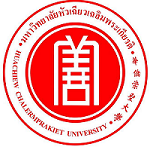Please use this identifier to cite or link to this item:
https://has.hcu.ac.th/jspui/handle/123456789/2060Full metadata record
| DC Field | Value | Language |
|---|---|---|
| dc.contributor.author | Unchalee Kongintr | - |
| dc.contributor.author | Benchaporn Lertanantawong | - |
| dc.contributor.author | Chamras Promptmas | - |
| dc.contributor.other | Mahidol University. Faculty of Engineering. Department of Biomedical Engineering | th |
| dc.contributor.other | Huachiew Chalermprakiat University. Faculty of Medical Technology | th |
| dc.contributor.other | Mahidol University. Faculty of Engineering. Department of Biomedical Engineering | th |
| dc.date.accessioned | 2024-04-15T08:10:33Z | - |
| dc.date.available | 2024-04-15T08:10:33Z | - |
| dc.date.issued | 2023 | - |
| dc.identifier.citation | Polymers 15(10), (May 2023) : 2241 | th |
| dc.identifier.other | https://doi.org/10.3390/polym15102241 | - |
| dc.identifier.uri | https://has.hcu.ac.th/jspui/handle/123456789/2060 | - |
| dc.description | สามารถเข้าถึงบทความฉบับเต็มได้ที่ https://doi.org/10.3390/polym15102241 | th |
| dc.description.abstract | An essential biomarker for the early detection of cardiovascular diseases is serum homocysteine (Hcy). In this study, a molecularly imprinted polymer (MIP) and nanocomposite were used to create a label-free electrochemical biosensor for reliable Hcy detection. A novel Hcy-specific MIP (Hcy-MIP) was synthesized using methacrylic acid (MAA) in the presence of trimethylolpropane trimethacrylate (TRIM). The Hcy-MIP biosensor was fabricated by overlaying the mixture of Hcy-MIP and the carbon nanotube/chitosan/ionic liquid compound (CNT/CS/IL) nanocomposite on the surface of a screen-printed carbon electrode (SPCE). It showed high sensitivity, with a linear response of 5.0 to 150 µM (R2 of 0.9753) and with a limit of detection (LOD) at 1.2 µM. It demonstrated low cross-reactivity with ascorbic acid, cysteine, and methionine. Recoveries of 91.10–95.83% were achieved when the Hcy-MIP biosensor was used for Hcy at 50–150 µM concentrations. The repeatability and reproducibility of the biosensor at the Hcy concentrations of 5.0 and 150 µM were very good, with coefficients of variation at 2.27–3.50% and 3.42–4.22%, respectively. This novel biosensor offers a new and effective method for Hcy assay compared with the chemiluminescent microparticle immunoassay at the correlation coefficient (R2) of 0.9946. | th |
| dc.language.iso | en_US | th |
| dc.subject | ท่อนาโนคาร์บอน | th |
| dc.subject | Carbon nanotubes | th |
| dc.subject | โพลิเมอร์ที่มีรอยพิมพ์ประทับโมเลกุล | th |
| dc.subject | Molecularly imprinted polymer | th |
| dc.subject | นาโนคอมพอสิต | th |
| dc.subject | Nanocomposites (Materials) | th |
| dc.subject | ไบโอเซนเซอร์ | th |
| dc.subject | Biosensors | th |
| dc.subject | โฮโมซีสเตอีน | th |
| dc.subject | Homocysteine | th |
| dc.title | A Label-Free Electrochemical Biosensor for Homocysteine Detection Using Molecularly Imprinted Polymer and Nanocomposite-Modified Electrodes | th |
| dc.type | Article | th |
| Appears in Collections: | Medical Technology - Articles Journals | |
Files in This Item:
| File | Description | Size | Format | |
|---|---|---|---|---|
| Biosensor.pdf | 88.29 kB | Adobe PDF | View/Open |
Items in DSpace are protected by copyright, with all rights reserved, unless otherwise indicated.
